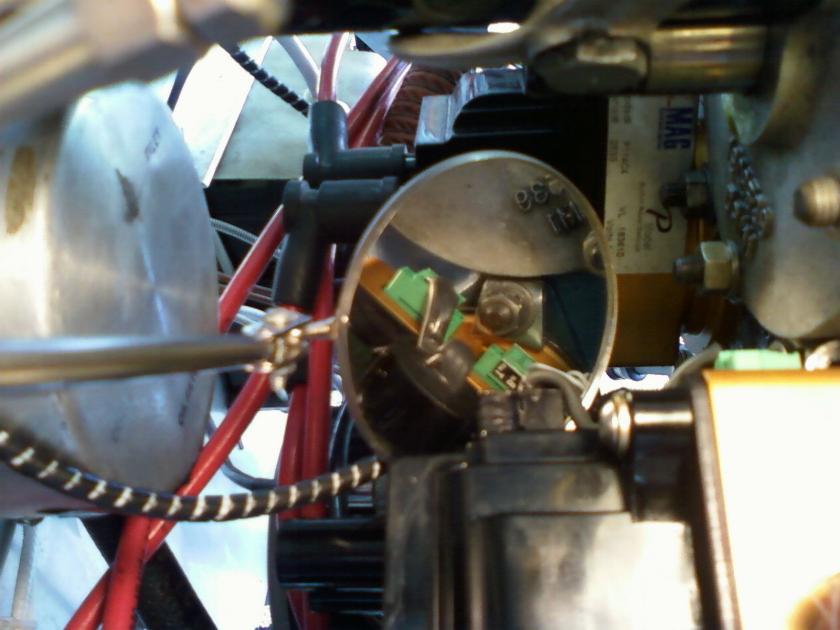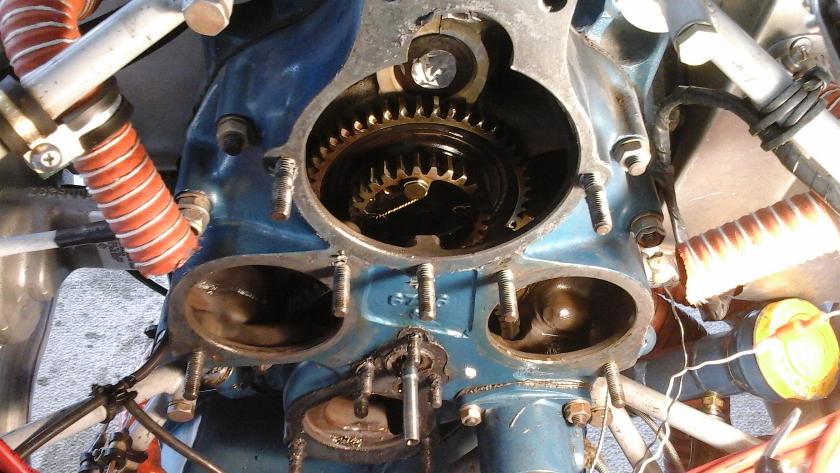Late February of 2013. I took the
KR out for a nice warm up flight and was once again so pleased with the
way this plane flies, and the way this engine runs. I have a
number of updates I'd like to do to the plane, but just can't stand to
ground a plane that flies so nice. By afternoon, that tune had
changed.
I pulled the plane in to start on what should have been a quick and easy annual inspection. First thing was to do a quick compression differential check. Nearly perfect, 79/80, 78/80, 79/80, and 58/80. What? That can't be right! I checked a little closer and the news was not good. It was leaking past the rings. That does explain why the engine has been pushing a bit more oil than expected. One of these tired old +.015 over cylinders has finally given up. Surely it must be a broken ring. I pulled the cylinder and saw nothing obviously wrong. But measuring the cylinder, it has gone well beyond service limits and was showing some cylinder wall distortion. It's time for new cylinders.
So, I got in contact with my friends at Aircraft Specialties and ordered a new set of Superior cylinders and a set of O-200-D pistons (8.5:1 compression rather than the 7.0:1 compression in the O-200-A). Wow! That was a surprise. I didn't think Continental was going to make those pistons available. I got into a real snag with the rings as Continental changed the top ring in the D pistons, then made them pretty much unavailable. Finally resolved it by having my friend Doug machine the top ring groove to fit the ring set from the C-75 through O-200-A ring set.
Now that the plane is already down for major maintenance, it's time to do all those little things I've been thinking about ever since the last major refit in 2005.
Engine
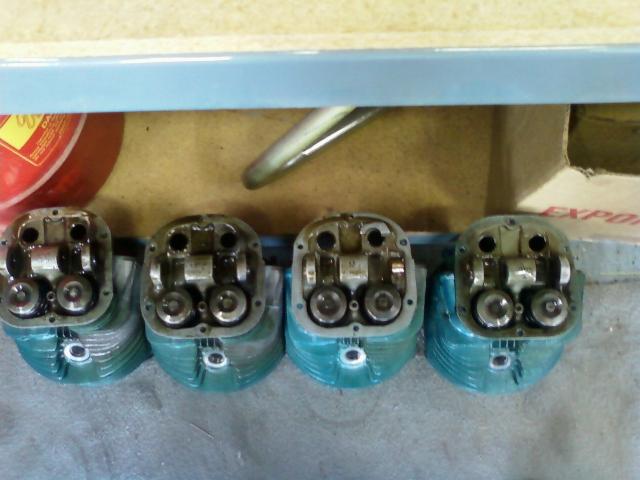
Feb 24 - #4 cylinder all the way to the right is the one with failing compressions, but what's up with #3? That
would be the same rocker boss that was broken in 2008 that I had welded by a cylinder shop and is obviously
broken again. These cylinders are going into retirement and will not fly again.
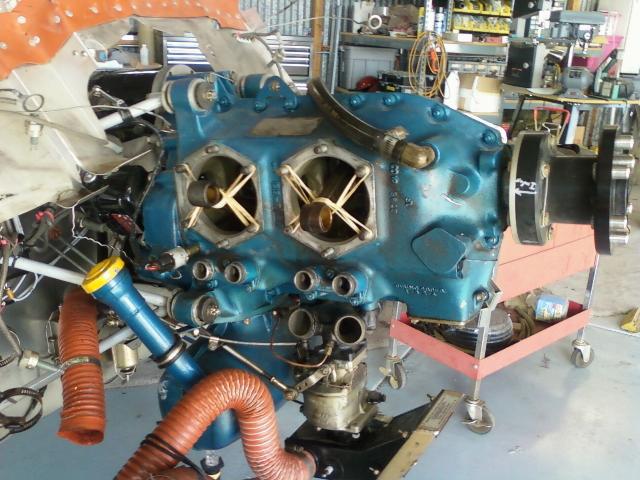
This is as far as I'll tear it down this time. I did replace the mount bushings while the engine was stripped down.
One may note that this engine has the adapters to allow me to use the less expensive A and C series mount
bushings.

March 2 - Here is a side-by-side photo of the 8.5:1 compression O-200-D piston on the left and the 7.0:1 O-200-A
piston on the right. Note that the new piston is now down to 2 compression rings like most other pistons in the world.
One other note on this... Continental used a unique tapered ring for the top ring, then made the rings darned near impossible
to get... or afford. We machined the top of the top ring groove straight to fit the original C series/O-200-A ring set.
Update: 1 year later at annual inspection the compressions are all in the high 70s, so machining the ring groove for the straight
ring rather than the high dollar tapered ring seems to work OK.
Update: 2 years later the compressions are 78/79 over 80 all the way across and the oil consumption is roughly 1 qt
to 20 - 25 hrs. I couldn't be happier!

March 9 - Engine back together with Superior Millenium Cylinders. We did a little tune up on these new
cylinders. A three angle valve grind on the intakes to help the engine breath a bit better. Also radiused the
intake ports as Superior left very sharp edges where the intake makes the 90 degree turn to go through the
valve. I have bought several new Continental cylinders for O-200 overhauls. Hands down, the Superior
cylinders are the best.

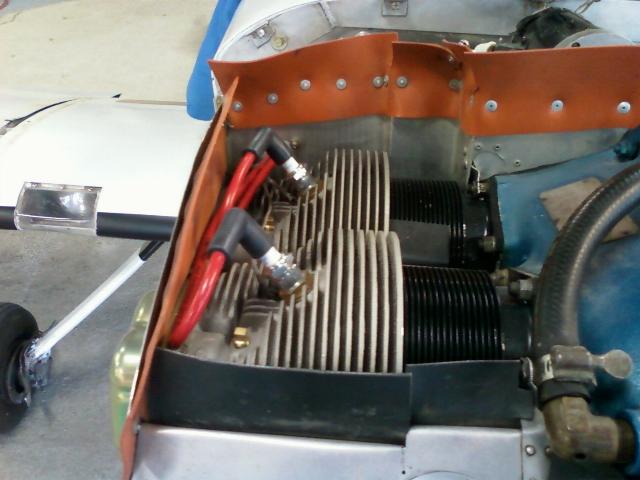
May 4 - What's up with the automotive plug wires and spark plugs?
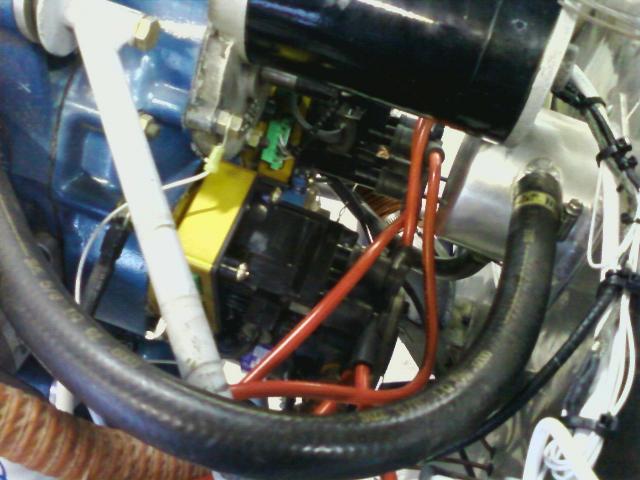
Hmm. That's not a magneto.
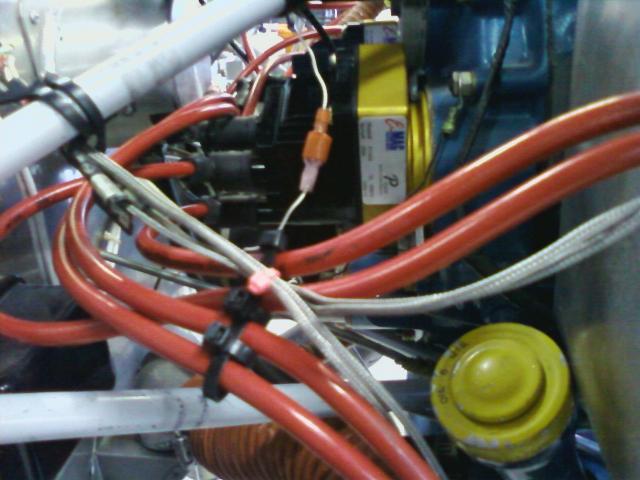
That tag says Emag. Actually these are Pmags, so are self powered once the engine is running and will add
a timing advance curve to the ignition. For engine break-in, I'm going to use the more conservative advance
and limit the timing to 34* advance to keep the temperatures down. Once the engine is broke in, I'll likely go
to the less conservative timing curve and allow it to go to 39* advance.
Update: After a year of operations, I find that I usually run the 34° advance unless I am headed out cross country.
With 39° advance climbing out at 7500', #2 CHT runs a bit warmer than I like to see (425° F) unless I am careful
to keep the speed up in the climb. At cruise, all 4 settle in nicely at 275 - 300° F with either advance setting.
Next update: After another year or operation, I finally found an air flow issue with the cooling on #2 cylinder. It
has taken me 18 years to notice I had 2 spark plug leads laying across a critical cooling area blocking the air flow.
Once that was addressed, I now use the 39° advance curve nearly all of the time.
I pulled the plane in to start on what should have been a quick and easy annual inspection. First thing was to do a quick compression differential check. Nearly perfect, 79/80, 78/80, 79/80, and 58/80. What? That can't be right! I checked a little closer and the news was not good. It was leaking past the rings. That does explain why the engine has been pushing a bit more oil than expected. One of these tired old +.015 over cylinders has finally given up. Surely it must be a broken ring. I pulled the cylinder and saw nothing obviously wrong. But measuring the cylinder, it has gone well beyond service limits and was showing some cylinder wall distortion. It's time for new cylinders.
So, I got in contact with my friends at Aircraft Specialties and ordered a new set of Superior cylinders and a set of O-200-D pistons (8.5:1 compression rather than the 7.0:1 compression in the O-200-A). Wow! That was a surprise. I didn't think Continental was going to make those pistons available. I got into a real snag with the rings as Continental changed the top ring in the D pistons, then made them pretty much unavailable. Finally resolved it by having my friend Doug machine the top ring groove to fit the ring set from the C-75 through O-200-A ring set.
Now that the plane is already down for major maintenance, it's time to do all those little things I've been thinking about ever since the last major refit in 2005.
Engine

Feb 24 - #4 cylinder all the way to the right is the one with failing compressions, but what's up with #3? That
would be the same rocker boss that was broken in 2008 that I had welded by a cylinder shop and is obviously
broken again. These cylinders are going into retirement and will not fly again.

This is as far as I'll tear it down this time. I did replace the mount bushings while the engine was stripped down.
One may note that this engine has the adapters to allow me to use the less expensive A and C series mount
bushings.

March 2 - Here is a side-by-side photo of the 8.5:1 compression O-200-D piston on the left and the 7.0:1 O-200-A
piston on the right. Note that the new piston is now down to 2 compression rings like most other pistons in the world.
One other note on this... Continental used a unique tapered ring for the top ring, then made the rings darned near impossible
to get... or afford. We machined the top of the top ring groove straight to fit the original C series/O-200-A ring set.
Update: 1 year later at annual inspection the compressions are all in the high 70s, so machining the ring groove for the straight
ring rather than the high dollar tapered ring seems to work OK.
Update: 2 years later the compressions are 78/79 over 80 all the way across and the oil consumption is roughly 1 qt
to 20 - 25 hrs. I couldn't be happier!

March 9 - Engine back together with Superior Millenium Cylinders. We did a little tune up on these new
cylinders. A three angle valve grind on the intakes to help the engine breath a bit better. Also radiused the
intake ports as Superior left very sharp edges where the intake makes the 90 degree turn to go through the
valve. I have bought several new Continental cylinders for O-200 overhauls. Hands down, the Superior
cylinders are the best.


May 4 - What's up with the automotive plug wires and spark plugs?

Hmm. That's not a magneto.

That tag says Emag. Actually these are Pmags, so are self powered once the engine is running and will add
a timing advance curve to the ignition. For engine break-in, I'm going to use the more conservative advance
and limit the timing to 34* advance to keep the temperatures down. Once the engine is broke in, I'll likely go
to the less conservative timing curve and allow it to go to 39* advance.
Update: After a year of operations, I find that I usually run the 34° advance unless I am headed out cross country.
With 39° advance climbing out at 7500', #2 CHT runs a bit warmer than I like to see (425° F) unless I am careful
to keep the speed up in the climb. At cruise, all 4 settle in nicely at 275 - 300° F with either advance setting.
Next update: After another year or operation, I finally found an air flow issue with the cooling on #2 cylinder. It
has taken me 18 years to notice I had 2 spark plug leads laying across a critical cooling area blocking the air flow.
Once that was addressed, I now use the 39° advance curve nearly all of the time.
